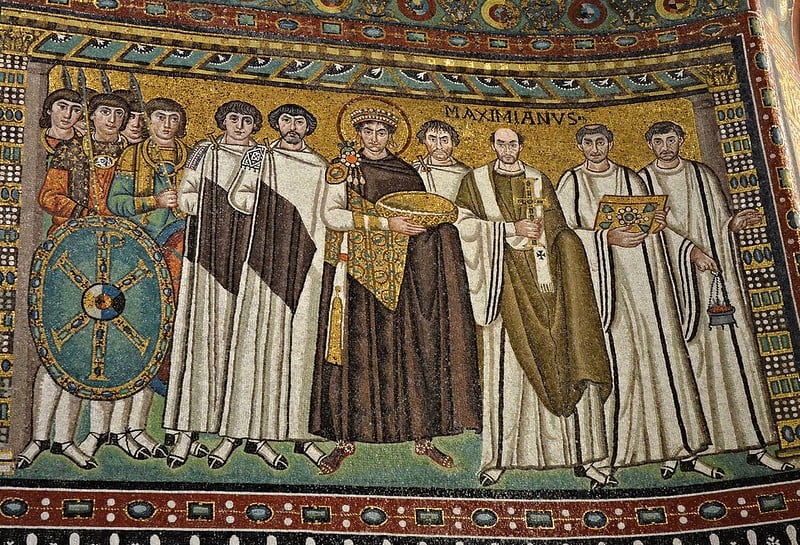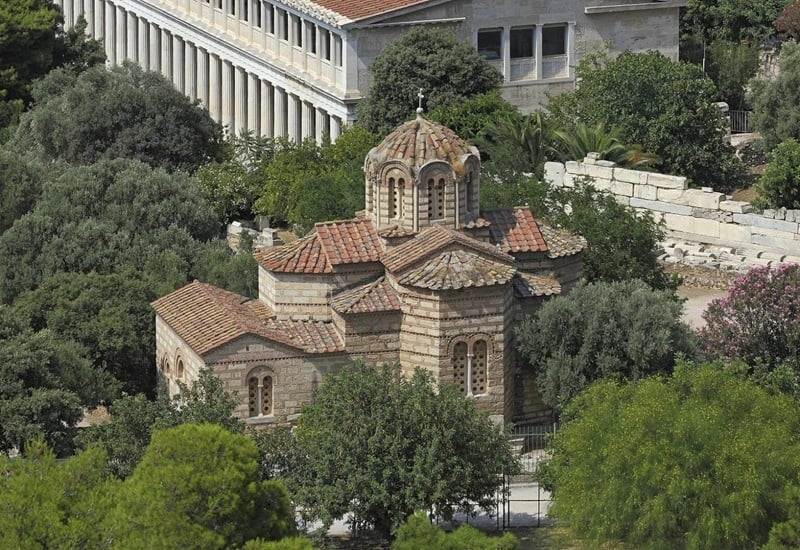How the Byzantine Legacy Continues to Shape Modern Greece

The current national identity of Greece is significantly affected by the Byzantine past of its territories and its people.
The Byzantine Empire played a crucial role in shaping modern Greece. Lasting more than a millennium, it continues to influence Greek culture, art and religious life today.
Architecture
Byzantine architecture is still one of the most evident legacies in modern Greece. The rounded domed cathedrals, with their intricate geometric forms and clever architecture, have been the architectural blueprints for Orthodox Christian churches throughout the country.

These structures have distinctive characteristics such as pendentives and squinches, architectural elements that allow circular domes to be placed on square bases.
This is also the reason why most churches in Greece and other Eastern Orthodox-majority countries, remind us of the early Christian places of worship. The Byzantine legacy has managed to live on, leaving Greece unaffected by architectural movements such as the Gothic that flourished in the West in the Middle Ages,.
The iconography
Additionally, modern Greek Orthodox churches continue to celebrate Byzantine artistic traditions such as iconography and temple adornments. The distinctive style of icon painting includes highly stylised figures, mystic gold backgrounds and front-facing, austere holy figures. They establish a direct relationship with the audience, provoking sentiments of awe and veneration, when compared to the more realistic and colourful iconography of the Catholic Church.
Modern Greek painters continue to use similar techniques to those of the Byzantine Empire, creating intricate religious artwork, particularly in the fields of icon painting and church décor.
The Byzantine expertise in mosaics is another crucial element of the Byzantine identity that continues to influence modern Greek creative expression significantly, particularly in the realm of religious art.

The distinctive methods of employing gold tiles to achieve shimmering effects, for example, is a source of modern inspiration for many Greek artists and designers. These beautiful and elaborate decorations, particularly in religious settings, are a clear continuation of the Byzantine tradition that created spiritual surroundings that stimulated the senses at its peak.
The Orthodox Christian faith is widely regarded as the Byzantine Empire’s greatest lasting legacy in modern Greece and across the Eastern Orthodox world.
The modern Greek church
Orthodox Christianity is still exceptionally important in the spiritual and everyday life of Greek society. The powerful Greek Orthodox Church, drawing its inspiration and power from the all-mighty Orthodox Church of the Byzantine Empire, influences many elements of Greek life today, often leading to heated public dialogue about its role in Greece today.
Many Byzantine traditions are also preserved in the church, including architectural designs and liturgical customs that find their roots deep inside the core of the Byzantine Empire.
Modern Greek Orthodox churches follow the Byzantine tradition of icon adoration, preserving spiritual rituals that were developed at the empire’s height and defined by centuries of religious tradition and dogmatic debates.

For example, the iconostasis, a distinguishing characteristic of Orthodox churches, is still an important part of modern church architecture, dividing the sanctuary from the crowd, a clear differentiation from the Catholic Churches of the West, where there is no division.
The Byzantine influence in Greece extends beyond ecclesiastical areas, of course, as it includes broader cultural practices. Byzantine social practices have definitely laid the groundwork for the emphasis Greece and its society place on family values and traditional social institutions.
The preservation of the Greek language and cultural identity during the Byzantine period also had a significant impact on modern Greek nationalism.
Today’s Greece finds inspiration and comfort in shaping its modern identity based on both the traditions of ancient Greece and also on those of its Byzantine legacy.
Churches in Greece are the living embodiment of Byzantine influence
New churches and public buildings frequently integrate Byzantine architectural aspects in Greece, illustrating how important this historical legacy still is today. The Byzantine tradition of blending utilitarian functionality and spiritual symbolism is what makes this legacy so capable of surviving over time.
If there is one particular institution of modern Greece that is still heavily influenced by the Byzantine legacy of the past, it is the Greek Orthodox Church.
The Byzantine architectural legacy can be seen in Greek Orthodox churches across the country, where it remains remarkably intact and exceptionally influential.
The cross-in-square plan with a central dome, for example, which was first perfected during the Byzantine era, continues to be the standard template for the construction of Orthodox churches throughout Greece, something that is not found to this extent anywhere else in the Orthodox world, with the exception of Cyprus.
These Greek Orthodox churches maintain the uniquely sophisticated structural elements that were developed by prominent Byzantine architects. As well as pendentives that enable the transition from square bases to impressive circular domes there is the careful arrangement of subsidiary spaces around the central nave that distinguish these churches from other architectural styles.

Modern Greek Orthodox churches are known for meticulously preserving the interior arrangements as well. These arrangements were established centuries ago, during the Byzantine period.
The most prominent feature is the iconostasis, a beautifully decorated screen that is adorned with stunning icons that separate the sanctuary from the people who attend liturgies.
The spatial hierarchy within these Greek Orthodox churches faithfully follows Byzantine traditions, with the dome representing heaven above and the careful positioning of religious imagery throughout the interior, each having its own unique meaning. The architectural elements of churches in Greece that follow the Byzantine traditions are there both for practical and symbolic functions.
Another element of churches in Greece that has been heavily influenced by the Byzantine legacy is the interior decoration.
Most church interiors in Greece feature the characteristic combination of marble cladding, mosaic work and beautiful icon painting that defined Byzantine religious spaces for centuries.
The use of gold tiles in mosaics, for example, to create a shimmering effect that transforms with changing light conditions, is a truly distinctive feature that instantly reminds us of the Byzantine era.
Modern Greek craftsmen still use centuries-old traditional Byzantine techniques for creating these elaborate decorations, particularly when trying to create mosaics and paint religious icons that have their characteristic stylized figures and gold backgrounds.
Business Wire







No comments